St. Petersburg is a major historical center and the second-largest city in Russia, known for its fascinating culture, history, and architecture.
While the incomparable art collection of the State Hermitage Museum is the most famous attraction, there are many other fascinating museums in St. Petersburg to see. No surprise, then, that you’ll be spoiled for choice.
Here are 10 of the best museums to visit in this cultural capital.
Catherine Palace
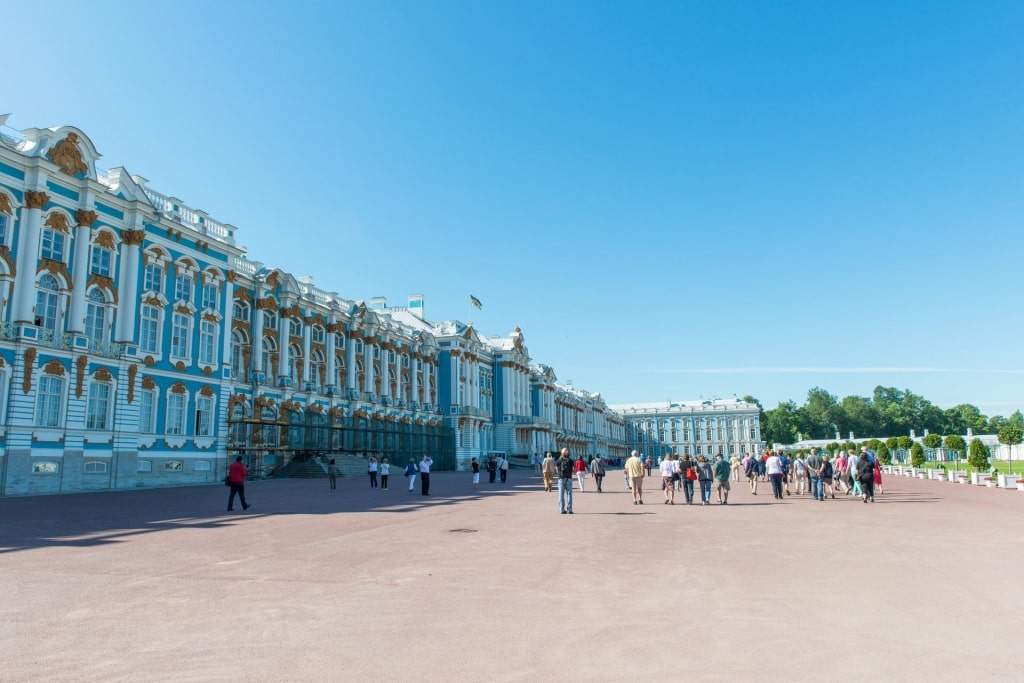
Catherine Palace
The Catherine Palace, the former residence of the Russian tsars, is known for its elaborate Russian baroque exterior, a confection of pale blue, white, and gleaming gold.
The museum covers the 300-year history of this fascinating palace. What’s especially interesting is that of the 58 halls destroyed during World War II, 32 have been painstakingly recreated.
The Amber Room was renovated in 2003 and was carefully restored to its famous splendor. Here, you’ll be dazzled by luminous amber panels mounted on walls of gold leaf, festooned with mirrors and mosaics.
Another highlight is the State Study of Alexander I by the architect Vasily Stasov, considered one of the best Empire-style halls in Russian architecture. Be sure to leave time to stroll through the palace’s landscaped park, a tranquil environment of lawns, lakes, mature trees, and ornate bridges and pavilions.
Church of the Savior on the Spilled Blood
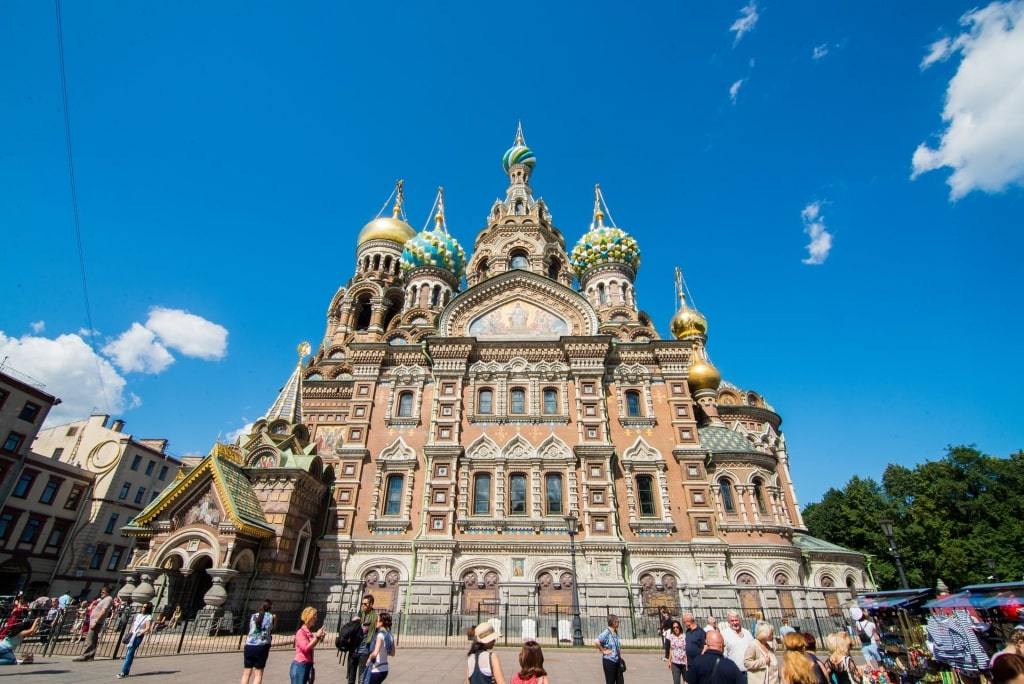
Church of the Savior on the Spilled Blood
One of the most iconic museums in St. Petersburg, the dazzling Orthodox Church of the Savior on the Spilled Blood was built on the site where Tsar Alexander II was wounded and died in 1881. Officially called the Church of the Resurrection, the Savior on the Spilled Blood refers to this famous assassination. Construction of the church took 25 years, from 1883 to 1907, and was funded by the imperial family, which went wildly over budget.
Outside, you’ll marvel at the onion domes of brilliant colors and gleaming gold. One of the most striking elements of the church is the 80,000 square feet of mosaics that cover the walls and ceiling inside, many depicting scenes from the Bible as well as coats of arms of cities throughout Russia. Intricately patterned borders distinguish one scene from the next.
This church is considered by many restorers to contain more mosaics than any other church in the world. From an architectural standpoint, it’s considered one of the most colorful and beautiful cathedrals showcasing the Russian Revival style.
Fabergé Museum
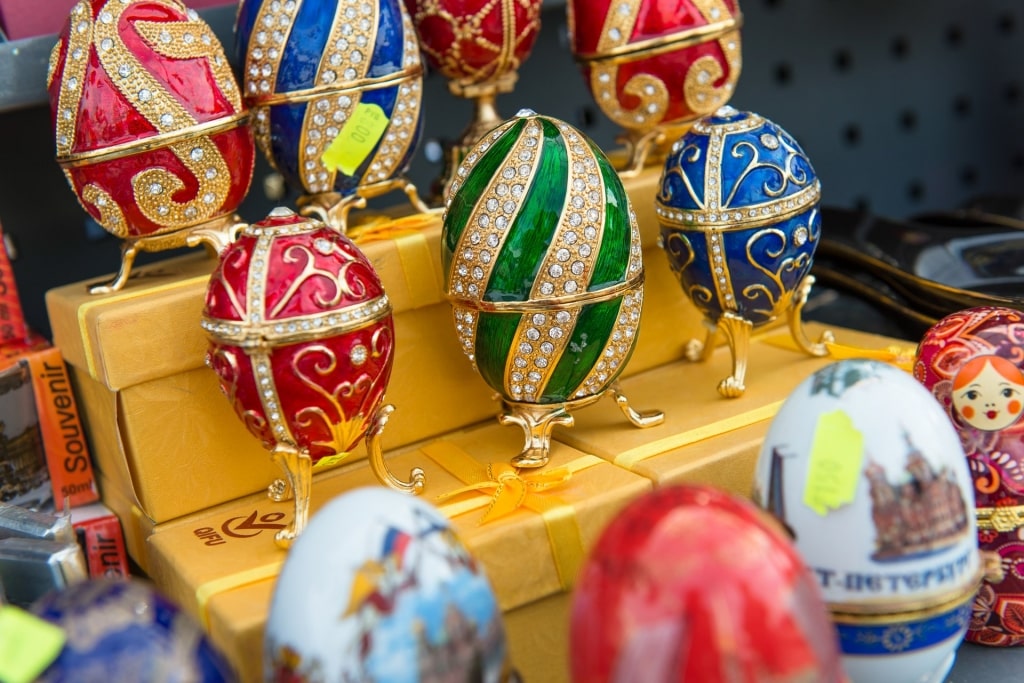
Fabergé Museum
The Fabergé Museum was opened to the public in 2013 in the meticulously restored Shuvalov Palace. One of the most popular St. Petersburg museums, it contains over 4,000 items created by the jewelers of the House of Fabergé, including the famous Easter egg masterpieces, fantasy-themed crafts, jewelry, silverware, home decor, and objects of worship.
Of course, it’s the jewel-encrusted Easter eggs that have made the Fabergé Museum such an essential visit when in Russia. These nine eggs have been delicately designed in intricate detail.
A great number of other historic items in the collection offer insight into the life of the Romanov dynasty—both household objects for daily use and cabinet gifts bestowed as a symbol of distinction.
Erarta Museum
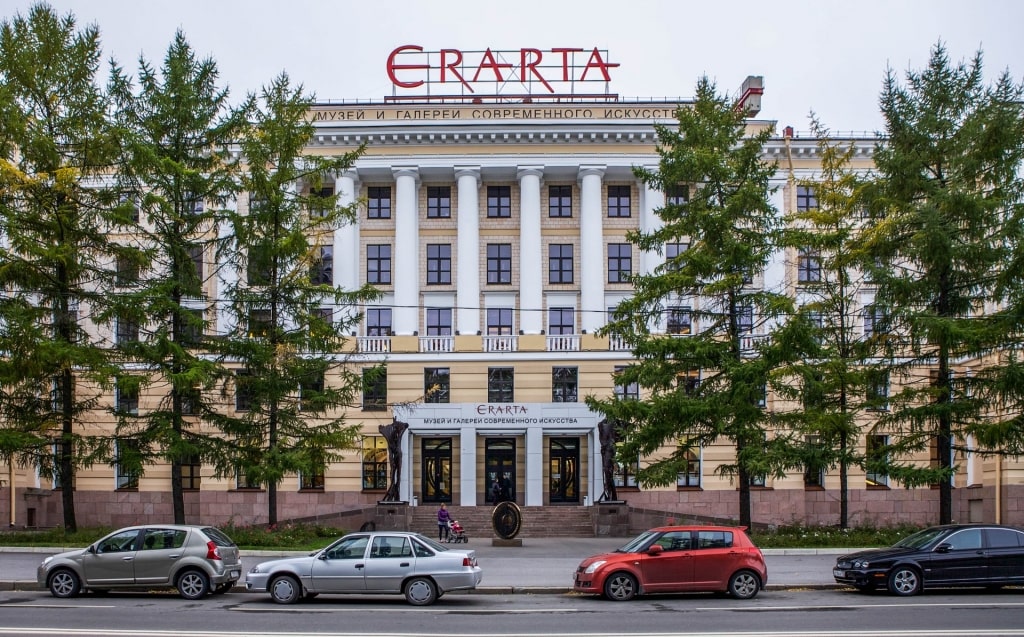
Erarta Museum Photo by Ninara on Flickr, licensed under CC BY 2.0
Erarta Museum is the largest private museum of contemporary art in Russia and is made up of over 2,800 works of art created by more than 300 artists from over 20 regions of Russia. The museum is continually adding to its collection, which contains paintings, graphics, sculptures, objects, installations, and other forms of art.
Erarta is more than just a traditional fine art establishment; it showcases new and emerging talent of contemporary artists in Russia. What makes the museum worth a visit is the opportunity to see works of both renowned masters as well as talented artists who aren’t yet widely known. It’s considered the first museum of contemporary art in St. Petersburg and the largest private museum in Russia.
St. Isaac’s Cathedral
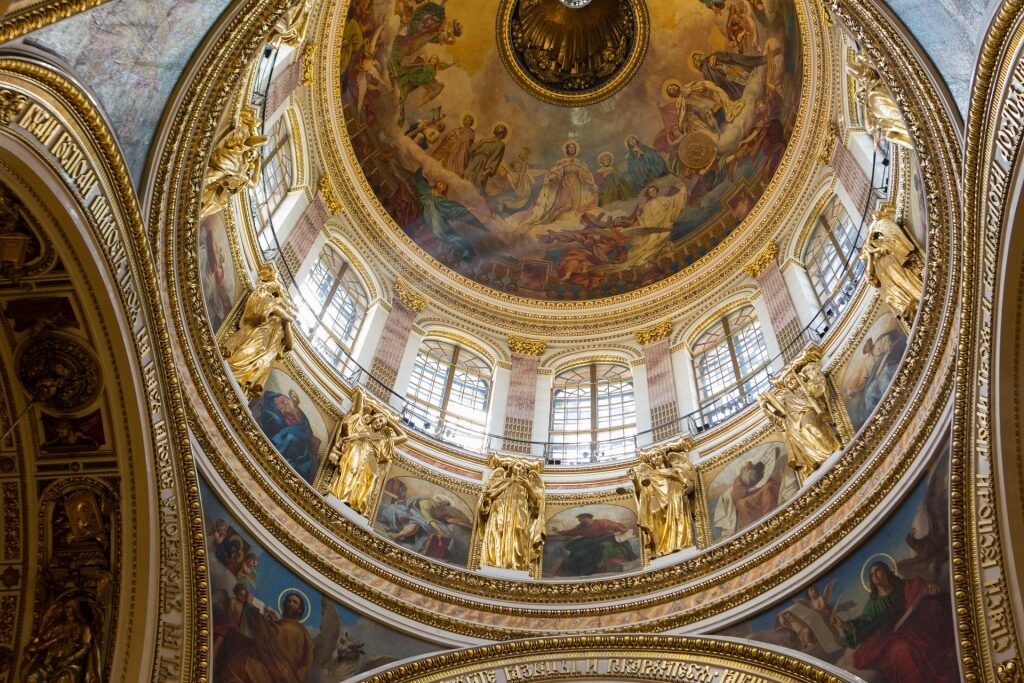
St. Isaac’s Cathedral
One of the largest Russian Orthodox churches in the world, St. Isaac’s Cathedral was named after Peter the Great’s patron saint. The architecture of the church is what draws so many visitors, and the opulent interior is open as a museum, with visits timed around services.
The cathedral’s iconic dome, plated with pure gold, is a prominent feature of St. Petersburg’s skyline. The exterior is adorned by 112 pink granite columns, each one cut from a single block.
One of the best things to do in St. Petersburg is to explore the rotunda, which is encircled by a walkway accessible to visitors and offers wonderful views across the city skyline. You’ll see 24 statues of angels situated on the roof and another 24 on top of the rotunda.
Yusupov Palace
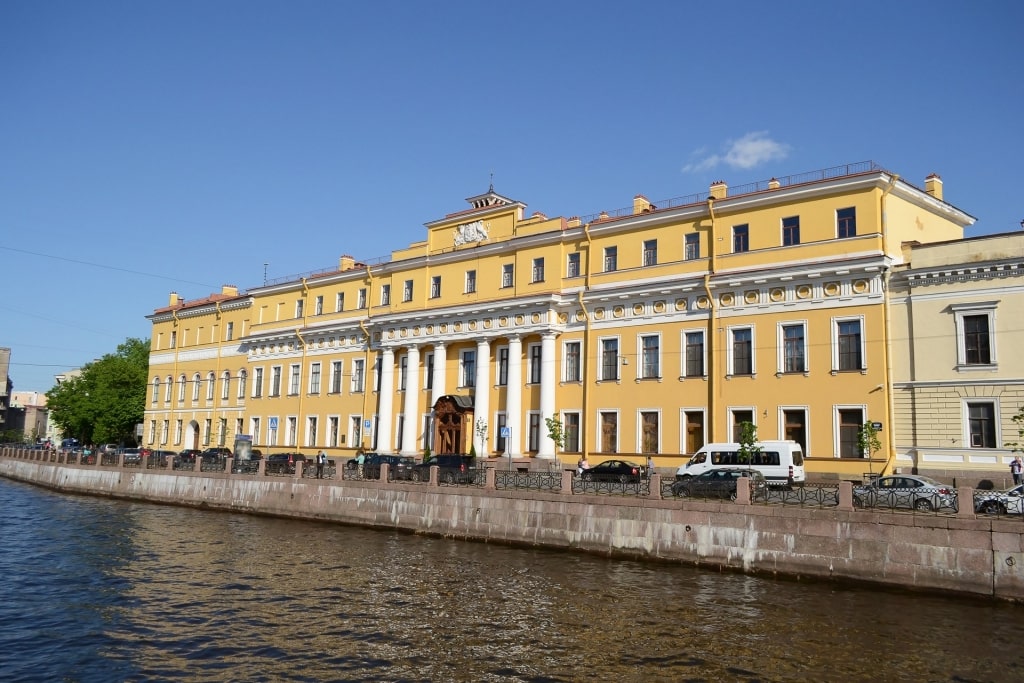
Yusupov Palace
This ornate museum is housed in a lavishly decorated palace on the Moyka River that once belonged to Prince Felix Yusupov. You’ll walk through the dazzling halls, studies, and galleries where the wealthy Yusupov family, one of the richest in Russia, lived for almost 90 years.
Grigory Rasputin, a peasant from Siberia, was murdered here in 1916. He rose to fame with his alleged mystical powers and his enchantment of the Russian royals of the time. In a room that’s now open to the public, he was poisoned and then shot dead by a group of Russian nobles who wanted to end what they considered an unhealthy influence. It’s worth extending your tour to visit this room and learn its grisly secrets.
Peterhof Palace
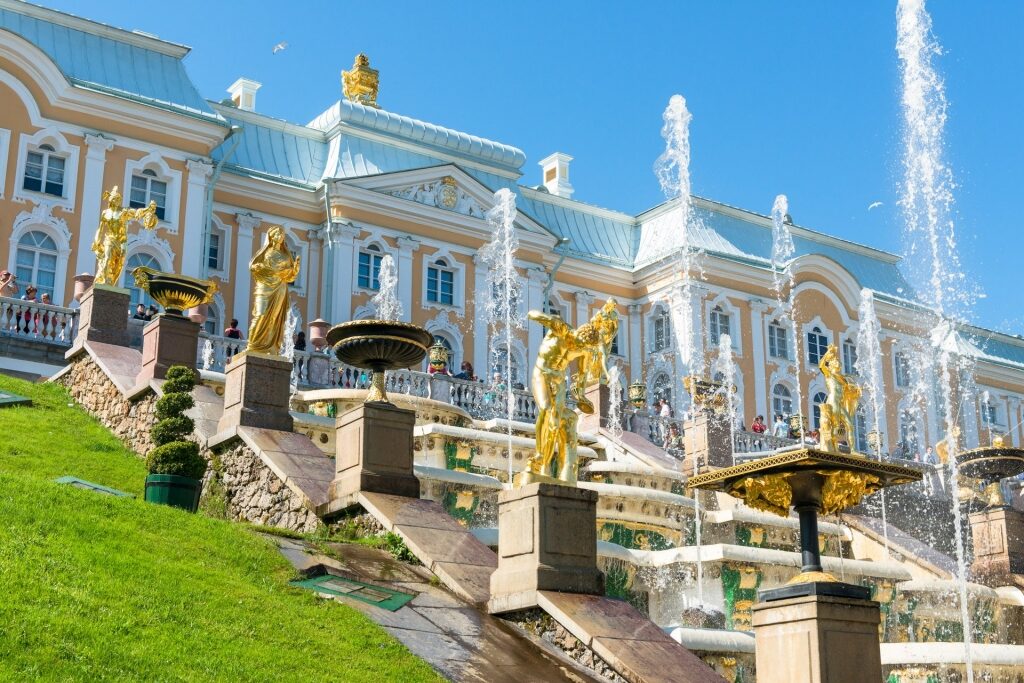
Peterhof Palace
This amazing complex was constructed under the orders of Peter the Great to rival the Palace of Versailles, just outside Paris. This massive palace features more than 30 rooms filled with art, original furniture, and glittering chandeliers. You’ll see ballrooms, portrait galleries, the original Throne Room, and Peter’s oak study.
After your visit, take time to explore Lower Park, the palace’s landscaped gardens, filled with splashing, gilded fountains, statues, neat flower beds, and ornamental hedges.
State Hermitage Museum
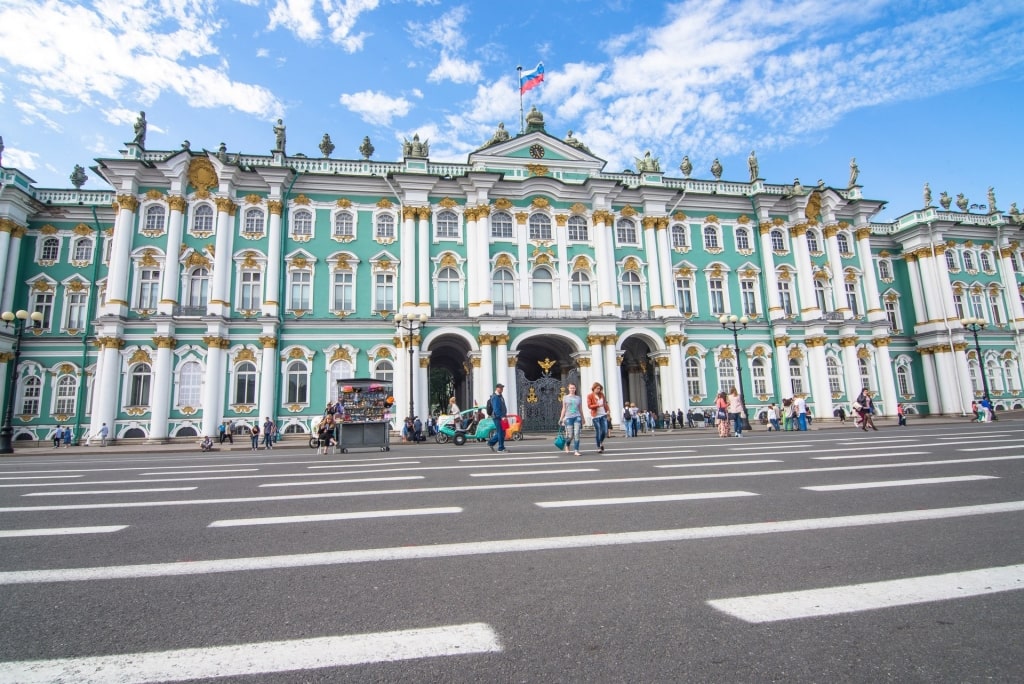
State Hermitage Museum
One of the most famous museums in St. Petersburg, the State Hermitage Museum is housed in part in the green, gold, and white Winter Palace. The museum spans 120 rooms and includes over three million works of art, including paintings, graphic works, sculptures, works of applied art, and archaeological artifacts.
You’ll want to see Michelangelo’s Crouching Boy, as well as Raphael’s Madonna and Child. The Malachite Room is a masterpiece in itself, shimmering gold, with scarlet velvet curtains and exquisite green malachite columns, panels, and vases.
The impressionist and post-impressionist collection is extraordinary, with artists from Van Gogh to Renoir, Matisse and Picasso represented. The Hermitage is, without doubt, one of the best museums in the world; if you only visit one place, make it this one.
State Russian Museum
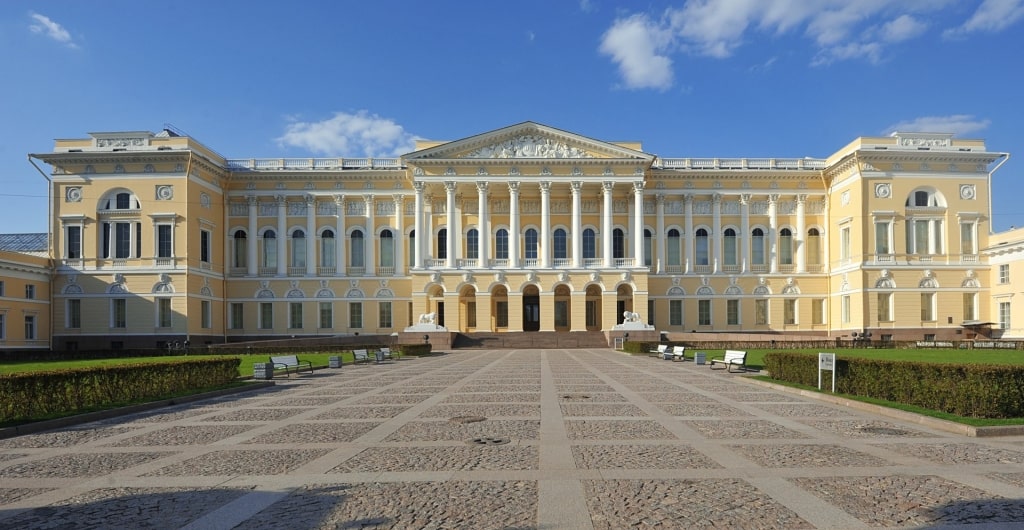
State Russian Museum
The State Russian Museum is a unique architectural complex in the historical center of St. Petersburg. The museum opened in 1898 and houses over 40,000 exhibits.
It’s regarded as the world’s largest collection of Russian art and contains everything from elaborate antique icons to contemporary art. The main exhibit is located in the grand, ochre-and-white Mikhailovsky Palace.
Grand Maket Russia
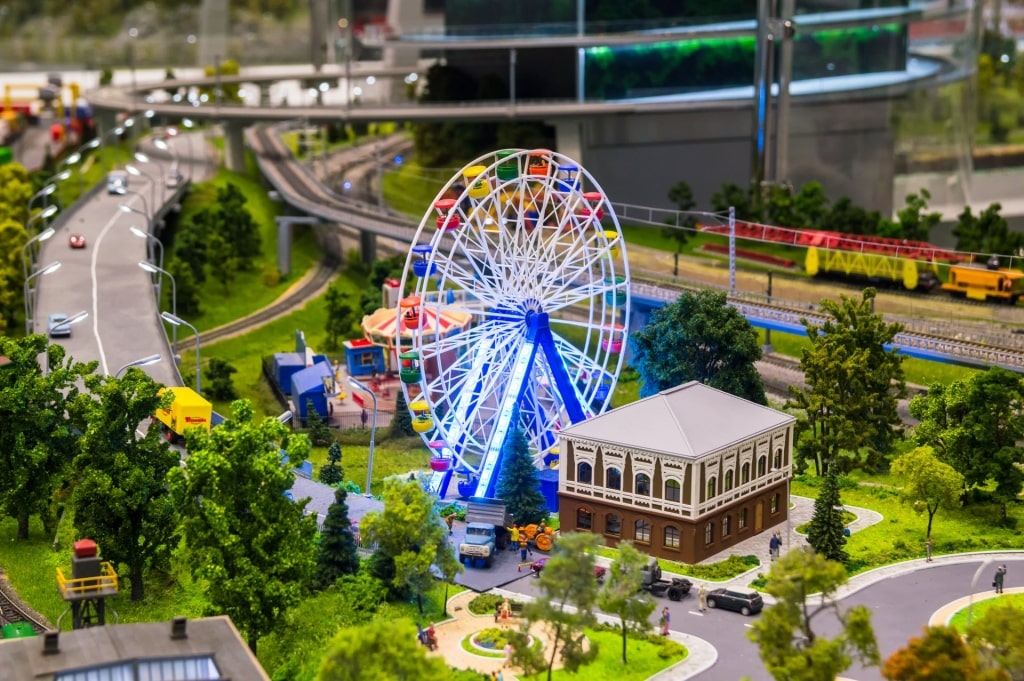
Grand Maket Russia
The Grand Maket Russia is a great choice if you’re traveling with kids through Europe. The interactive collection consists of small models of Russia’s most famous places, all to scale at 1:87. It’s a great way to get a sense of the size and magnitude of Russia’s most visited and well-known sights, and it’s also one of the largest examples of moving miniatures and action figures in the world.
Every 13-minute cycle, day turns into night via more than 500,000 LED lights, illuminating and giving life to the model. It took over 100 people five years to complete the project, but if attendance records are any indication, it’s been a roaring success since it opened its doors.
Model train enthusiasts will not be disappointed. The display has over one-and-a-half miles of train tracks, 452 switch boxes, and 250 locomotives. It showcases the Trans-Siberian railway in all its romance.
Read: Best Museums in Europe
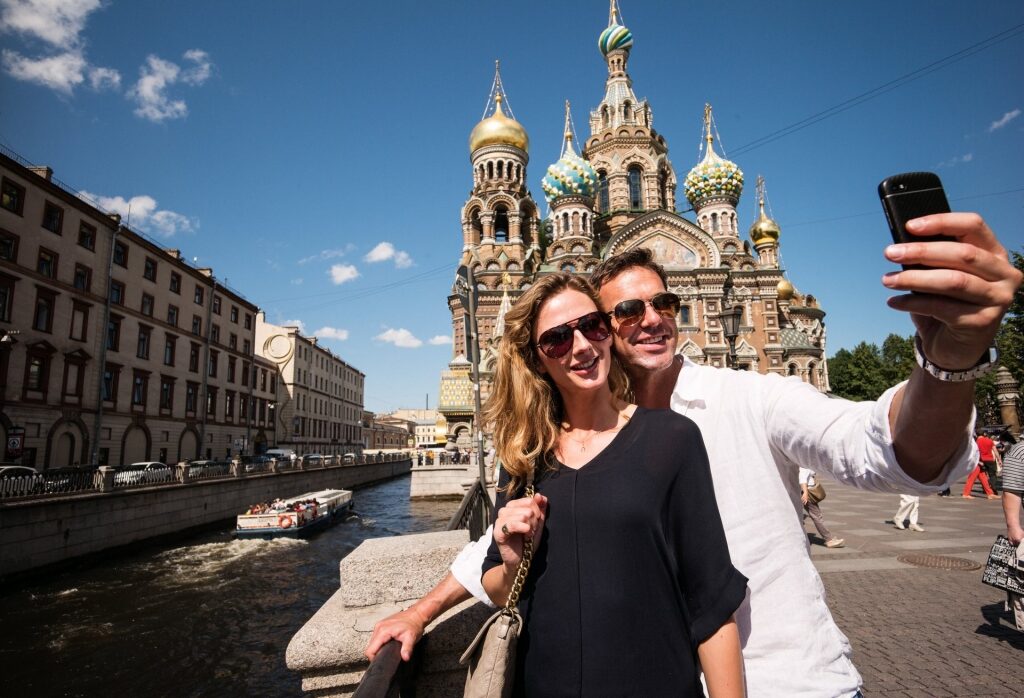
Church of the Savior on the Spilled Blood
Visit the world-class museums in St. Petersburg by taking a cruise to Russia. With overnights in St. Petersburg, you’ll have two full days to explore the art, culture, and architecture of this extravagantly lovely city. Start planning your cultural odyssey on our website.



